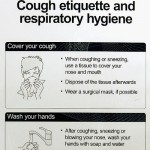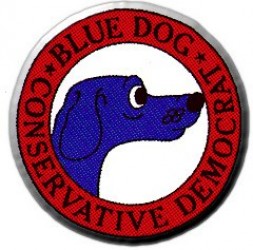Alex Constantine - August 19, 2010
Despite rules changes intended to benefit consumers over the past 60 years, multiple felon Big Pharma continues to play by its own rules.
By M. Dennis Paul, Ph.D.
Salem-News.com | Aug-16-2010
 (WINDSOR, N.H.) - As far back as 1947 when US military courts tried the criminals of I.G.Farben for the atrocities they both committed and assisted in support of the Nazi regime, sentencing for pharmaceutical/chemical companies and their employees has been remarkably minimal.
(WINDSOR, N.H.) - As far back as 1947 when US military courts tried the criminals of I.G.Farben for the atrocities they both committed and assisted in support of the Nazi regime, sentencing for pharmaceutical/chemical companies and their employees has been remarkably minimal.
Farben was broken up by military tribunal. The major players in Farben received negligible sentences ranging from 1-8 years in prison (Including time served).
Many, upon release, became leaders in the various component companies which formed the I.G.Farben conglomerate while others moved into government positions. In 1952, I.G. Farben was slated to be liquidated and dissolved.
It is now 2010 and IG Farben continues to be traded openly on the market and has repeatedly refused settlement agreements designed to compensate the victims of its slave labor and other abuses. Settlement was the sole purpose for its continuance after the trials. In 1957, the allies returned control over the companies comprising I.G.Farben to their original stock holders.
Today, some of the original companies making up I.G.Farben as well as those that merged and/or split off into other companies are among the largest chemical/pharmaceutical companies in the world. Essentially, the dissolution of Farben was merely an orchestrated scheme in which the criminal companies survived and the shell (empty) conglomerate was slated to be dissolved. No one blinks an eye as those victims die off, uncompensated, and the criminals of I.G. Farben continue to profit.
In the years that followed the trials of I.G.Farben, the pharmaceutical industry recovered and continued to grow; rapidly (by 1970) becoming the most profitable industry in both the US and the world. Marketing drugs soon outpaced the research intended to prove their efficacy.
Prior to 1900, there were scarce few regulations and laws protecting consumers. Consumers were guinea pigs for every manufacturer whether based in a laboratory or the kitchens and bathrooms of inventors and con artists. With the signing of the 1906 “Wiley Act” by President Theodore Roosevelt, the beginnings of authority to regulate this industry took root under the USDA Bureau of Chemistry.
It did not, however, take long before the authority granted USDA was tempered by judicial decisions and a variety of “Boards” representing everything from farmers to chemical manufacturers. The various industries overseen by the USDA and the FDA (1930), through either direct challenge or lobbying, were able to be granted exceptions, exemptions or complete elimination of regulations.
Congress periodically held hearings to investigate the practices of these industries but had little to no effect on their day to day operations. In 1938, Franklin Delano Roosevelt passed the FD&C Act which granted considerably broader enforcement to the FDA. Despite numerous revisions to this act, it remains in effect today and is the basis for existence of the current FDA.
It did not take long before the industry began to circumvent new regulations, have them legislatively amended, or eliminated. There were many flaws in this legislation, one of which was no specific coverage of pre-market testing for efficacy. This forced the FDA to use post market recall as a “protection” for consumers. As the science of toxicology grew and improved, a number of regulations followed mandating pre-market testing.
It was not, however, until the expansive hearings presided over by Senator Estes Kefauver, between December 1959 and September 1960, that the American public got a clear look at the industries that controlled what they ate, drank, and consumed as “medicine”. These hearings represented an explosion of knowledge regarding how, in particular, the pharmaceutical industry tested, approved, and marketed their drugs.
The hearings further explained the monopolistic price fixing that had emerged post Farben. Out of these hearings came an array of legislation attempting to regulate an industry that had basically run roughshod over the nation using dubious science, dishonest and fraudulent marketing, dangerous and fraudulent testing, and grossly inflated pricing to obtain its massive profits. On October 10, 1962, the Kefauver-Harris Drug Amendments passed both Houses of Congress unanimously. Notable, however, those provisions aimed at reducing drug prices had been removed.
Morton Mintz, author of The Therapeutic Nightmare (Boston, 1965), critically reported on this period further exposing the criminal aspects of the industry and the failures of legislation in regulating and penalizing the offenders. Due in large part to court restrictions mandating the highest possible levels of proof regarding charges of fraud, price fixing, and elicit influence, it was exceptionally difficult for FDA to criminally prosecute offenders and the limits of penalties for offenders made it almost senseless to prosecute.
Today, despite continuing legislation regulating this industry, prosecution remains difficult and penalties remain laughable. Pharmaceutical lobbies represent the largest dollars spent on influencing Congress, doctors, schools, researchers, and the public. In the quest for ever higher profit, such lobbying apparently is not enough as the industry continues to rely upon illegal methods for saturating the market for each new drug.
One has only to look in the daily news to witness the weakness in laws governing penalties for corruption in the industry. Called “white collar” crime, violations are rampant while prosecutions are scant. Recalls remain the major enforcement method for the FDA and the Dept. Of Justice is more apt to seek an “agreement” with offenders as opposed to full scale prosecution.
Even when prosecution occurs, the degree to which pharmaceutical companies negotiate penalty more often releases them from criminal liability on far more counts than it is held liable. A prime example is what was, in 2009, touted as the largest criminal prosecution and settlement of a major pharmaceutical company... The 2.3 billion dollar settlement ( http://4dza.sl.pt) reached with Pfizer over numerous counts of fraud and kickbacks. Considering that Pfizer has been the subject of numerous complaints over the past decade and has been using the same or similar tactics for years (and was, in fact, continuing these practices even after it had been initially charged), a $2.3 billion charge to the company which essentially paid back a portion of what it had defrauded is a mere drop in the bucket from the 50 billion dollars it made in profit for the year 2009. Pfizer actually hid the news of the settlement from everyone but the SEC while announcing its acquisition of Wyeth. http://4dzi.sl.pt . Back in 2007, Pfizer paid $35 million for off label promotion ( http://4dzw.sl.pt ). Since 2002, Pfizer settled out with the government at least 4 times. Aventis, Schering-Plough, Johnson & Johnson, Novartis, and almost every other pharmaceutical company has been investigated, either settled without admission or paid a relatively minor fine upon conviction. But the illegal practices continue. Needless deaths and injuries continue. Millions of tax payer dollars continue to be spent investigating.
What many, or most, people fail to understand is that over the years, the pharmaceutical industry has has been siphoning money from their pockets not just through these typical criminal activities but from research as well. Taxpayers support the NIH (National Institutes of Health) and the military medical research facilities and scientists who perform considerable research on medicines and medical treatments that wind up in the hands of the pharmaceutical companies gratis. Those companies turn that information into profits through manufacturing and marketing. Too, the lobbies essentially purchase the votes of almost every major legislator in Congress. What dollars they return in the dressing of fines is nothing compared to what they steal and nothing compared to what they are given. Companies have invested in university research and gain proprietary rights from the work of these institutes. The pharmaceutical industry is the major support for most all of the regarded scientific journals and a high percentage of general interest magazines. The industry supports many of the established medical boards (the APA’s, etc) and have established special interest advocacy groups specifically to support their interests and efforts (Partnership for Prevention http://4e4b.sl.pt , ARRIVE http://4e4d.sl.pt as examples). In recent years they have bought the largest slice of advertisements on television. In effect, they have insinuated themselves so deeply into almost every aspect of everyday life that Americans rely on this industry as much, if not more, as on the oil industry.
It seems the Justice Department, FDA, and the courts purposely overlook the 3 strikes and RICO laws where industry is concerned. Media, so beholden to the $$ of this industry would never dare preface an article with “Corporate Felon, Pfizer” despite this being a true statement. Of course, when it comes to thrice convicted Joe Criminal, the media does not hesitate to print “3 Time Felon, Joe Criminal, was arrested...”. The courts would order jail time for Joe. Big Pharma repeatedly gets a pass. Congress would never meet with and pay any serious attention to Felon Joe but jumps at the opportunity to dine with and accept illegally gained donations from Felon Pfizer. This double standard stands out even more with recent SCOTUS decision granting corporations the rights of citizens. Americans will have to pressure current and future legislators to enact legislation forbidding convicted felon corporations from transacting business with the government and its representatives, bar lobbying by convicted felon corporations, and require prison sentences for convicted felon corporations... perhaps even forced dissolution as with I.G.Farben (although, unlike Farben, dissolution would actually have to occur).
Many years ago, on a visit to the pharmacy at Mass. General Hospital, this writer inquired of the pharmacist why, on either side of the large pharmacy window, were the poppy plant and Cannabis plant depicted in tiles. His response was quick and concise. He informed that if both of these plants were legalized there would be no need for all of the pills and potions on the shelves behind him. These plants were the original Pharmacopoeia of ancient societies.. and they worked exceptionally well for whatever ailed one. I believed him then.. and have yet to find reason for doubting his words. Losing these two plants is, perhaps, the highest price we have actually paid for the cost of doing business. Big Pharma knows this.
=============
Administered Prices: Hearings before the Subcommittee on Antitrust and Monopoly of the Committee on the Judiciary, United States Senate (86 Cong., I and 2 ses.), Parts 14 through 26 (1960-1961), Kefauver hearings; Interagency Coordination in Drug Research and Regulation: Hearings before the Subcommittee on Reorganization and International Organizations of the Committee on Government Operations, United States Senate (87 Cong., 2 ses., and 88 Cong., I ses.), Parts I through 4 (1963-1964), Humphrey hearings. .
False and Misleading Advertising (Prescription Tranquilizing Drugs). Hearings before a Subcommittee of the Committee on Government Operations, House of Representatives (85 Cong., 92 ses., 1958).
1955 Citizens Advisory Committee report and internal and external critiques of FDA brought together in the Humphrey hearings, Part 2. Kefauver bearings, Parts 22 and 23, concerned with the Welch case, John Lear, “The Certification of Antibiotics,” Sat. Rev., 42 (Feb. 7, 1959), 43-48.
Citizens Advisory Committee, Report to the Secretary of Health, Education, and Welfare on the Food & Drug Administration (Washington, 1962); excerpts in Humphrey hearings, Part 2, 428-47. Humphrey cited, ibid., 583, 588.
Humphrey hearings, Parts I and 2, concerned with the thalidomide case.
Administered Prices: Drugs, 87 Cong., I ses., Senate Rep. 448 (1961), 3.
Frauds and Deceptions Affecting the Elderly, 89 Cong., I ses., Committee print of a report of the Subcommittee on Frauds and Misrepresentations Affecting the Elderly to the Special Committee on Aging, United States Senate (1965), 1.
Young, James Harvey. Pure Food: Securing the Federal Food and Drugs Act of 1906. Princeton, N.J.: Princeton University Press, 1989.
Swann, John P. “Sure Cure: Public Policy on Drug Efficacy before 1962.” In The Inside Story of Medicines: A Symposium, Madison, Wis.: American Institute of the History of Pharmacy, 1997.
Racketeering in Medicine: The Suppression of Alternatives Copyright © 1992, 1993 by James P. Carter, M.D., Dr. P.H. Published by Hampton Roads Publishing Company, Inc.891 Norfolk Square, Norfolk, VA 23502. Tel.: (804) 459-2453 begin_of_the_skype_highlighting (804) 459-2453 end_of_the_skype_highlighting Fax: (804) 455-8907. ISBN: 1- 878901-31-X
Ann. Rev. Social. 1985. 11:1-25
Copyright © 1985 by Annual Reviews Inc. All rights reserved
Pfizer Settles With DOJ for $35 Million in Genotropin Scandal; Who Knew? http://4dzw.sl.pt
http://4e0c.sl.pt Pfizer 2009 Settlement
http://4e0d.sl.pt Pfizer performance
J & J Subsidiaries to Pay More than $81 Million
Read more: The Qui Tam Team - J & J Subsidiaries to Pay More than $81 Million
http://4e0j.sl.pt
Pfizer paid $35 million to doctors over 6 months http://4e0k.sl.pt
Johnson & Johnson accused of paying kickbacks http://4e0m.sl.pt
Novartis Unit to pay U.S. $3.5 million to settle false claims case http://4e0r.sl.pt
Eli Lilly Settles with Mississippi for $18 Million http://4e0s.sl.pt
Four Pharmaceutical Companies Pay $124 Million for Submission of False Claims to Medicaid http://4e0y.sl.pt
Health Care Lobbyists Spend Big To Win Big http://4e12.sl.pt
Pfizer To Pay $835 Million In Asbestos Claims http://4e1c.sl.pt
good source on drug related issues http://4e1g.sl.pt
http://aktien.onvista.de/snapshot.html?id_osi=82198
http://www.spiegel.de/wirtschaft/0,1518,273365,00.html
http://news.bbc.co.uk/2/hi/business/3257403.stm
http://news.bbc.co.uk/2/hi/business/1549092.stm
http://www.highbeam.com/doc/1p1-47100893.html
http://www.relay-of-life.org/speech/speech.html
http://www.time.com/time/magazine/article/0,9171,888761,00.html
-----
M. Dennis Paul, Ph.D. is a Counselor and Conflict Resolution Specialist/Consultant(Mediation/Arbitration/Facilitation) (20+ yrs).
http://www.salem-news.com/articles/august162010/pharma-risk-mdp.php




